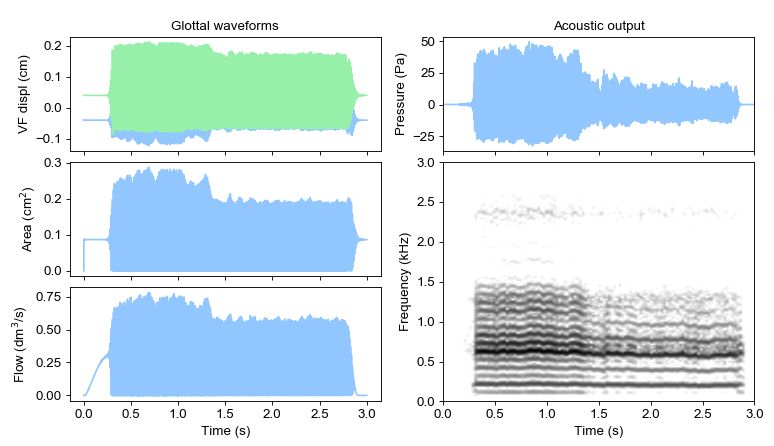Voice Disorder Simulation Samples
Physics-based simulation of disordered vocal timbres generated by SimuVox for clinical training and perceptual research.
About These Voice Disorder Samples
These audio samples demonstrate SimuVox's capability to simulate various voice disorders using biomechanical models of vocal fold pathology. Each disorder type is presented in both male and female voices, providing valuable resources for:
- Clinical Training: Training speech-language pathologists to recognize different voice pathologies
- Perceptual Research: Controlled stimuli for voice quality perception studies
- Patient Education: Demonstrating how different pathologies affect voice quality
- Therapeutic Planning: Understanding the acoustic characteristics of various disorders
- Algorithm Validation: Testing voice analysis and synthesis algorithms
Voice Disorder Types
Compare normal voice production with simulations of common voice disorders. Each sample uses the same utterance to highlight the differences in voice quality.
Normal:
Jitter:
Tremor:
Airflow noise:
Asymmetry:
This voice presents subharmonics up to t = 1.4s, where a bifurcation occurs (spectrogram below).

Technical Background
These simulations use physics-based models that replicate the biomechanical and aerodynamic mechanisms underlying each voice disorder:
- Jitter: Modeled by introducing random perturbations in vocal fold stiffness or mass
- Tremor: Simulated through low-frequency modulation of subglottal pressure and laryngeal muscle tension
- Airflow Noise: Generated by incomplete glottal closure allowing turbulent airflow through the glottis
- Asymmetry: Created by assigning different biomechanical properties to left and right vocal folds
Clinical Applications
These controlled voice disorder samples are valuable for:
- Training clinicians to identify and differentiate voice pathologies
- Calibrating perceptual rating scales (e.g., GRBAS, CAPE-V)
- Developing and validating acoustic analysis algorithms
- Creating educational materials for voice therapy courses
- Conducting perceptual experiments with standardized stimuli
- Demonstrating to patients how pathologies affect voice production
Research and Citation
The mathematical models underlying these simulations are described in:
Lucero, J.C., Schoentgen, J., & Behlau, M. (2013). Physics-based synthesis of disordered voices. In Proceedings of Interspeech 2013, Lyon, France.
Related publications on voice disorders and simulation:
- Englert et al. (2017). Perceptual error analysis of human and synthesized voices. Journal of Voice, 31(4), 516.e5-516.e18.
- Lucero et al. (2020). Phonation threshold pressure at large asymmetries of the vocal folds. Biomedical Signal Processing and Control, 62, 102105.
Related Resources:
- Learn more about SimuVox - Download the software and explore more features
- French vowel samples - Normal voice synthesis examples
- PhonaLab - Free voice analysis tool for clinicians
- Research publications - Read more about the science behind these simulations